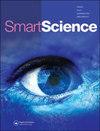Multi-objective Moth Flame Optimizer: A Fundamental Visions for Wind Power Integrated Optimal Power Flow with FACTS Devices
IF 1.4
Q2 MULTIDISCIPLINARY SCIENCES
引用次数: 8
Abstract
ABSTRACT Optimal power flow (OPF) is one of the complex optimization problems in the power system domain. The OPF problem becomes much more challenging when renewable energy sources are added to the power system grid, which is unpredictable and volatile. Also, FACTS (flexible AC transmission system) devices are becoming more common in modern power systems to help ease network congestion and minimize demand. This paper aims to solve the single and multi-objective OPF by combining stochastic wind power with various types of FACTS devices such as static VAR compensator, thyristor-controlled series compensator, and thyristor-controlled phase shifter. To model stochastic wind energy, Weibull probability density functions have been used. The locations and ratings of the FACTS devices are also designed to reduce the system’s total generation cost. A non-dominated multi-objective moth flame optimization technique is used for the optimization issue. The fuzzy decision-making approach is applied to the best compromise solution. The results are validated through a modified IEEE-30 bus test system and compared with three newly developed algorithms. Graphical abstract多目标飞蛾火焰优化器:风力发电与FACTS设备集成最优潮流的基本愿景
最优潮流(OPF)是电力系统领域的复杂优化问题之一。当可再生能源加入到不可预测和不稳定的电网中时,OPF问题变得更加具有挑战性。此外,FACTS(灵活交流传输系统)设备在现代电力系统中变得越来越普遍,以帮助缓解网络拥塞并最大限度地减少需求。本文旨在将随机风电与静态无功补偿器、晶闸管控制串联补偿器、晶闸管控制移相器等各类FACTS器件相结合,解决单目标和多目标OPF问题。为了模拟随机风能,采用了威布尔概率密度函数。FACTS设备的位置和额定值也旨在降低系统的总发电成本。采用非优势多目标飞蛾火焰优化技术求解优化问题。将模糊决策方法应用于最佳折衷方案。通过改进的IEEE-30总线测试系统验证了结果,并与三种新开发的算法进行了比较。图形抽象
本文章由计算机程序翻译,如有差异,请以英文原文为准。
求助全文
约1分钟内获得全文
求助全文
来源期刊

Smart Science
Engineering-Engineering (all)
CiteScore
4.70
自引率
4.30%
发文量
21
期刊介绍:
Smart Science (ISSN 2308-0477) is an international, peer-reviewed journal that publishes significant original scientific researches, and reviews and analyses of current research and science policy. We welcome submissions of high quality papers from all fields of science and from any source. Articles of an interdisciplinary nature are particularly welcomed. Smart Science aims to be among the top multidisciplinary journals covering a broad spectrum of smart topics in the fields of materials science, chemistry, physics, engineering, medicine, and biology. Smart Science is currently focusing on the topics of Smart Manufacturing (CPS, IoT and AI) for Industry 4.0, Smart Energy and Smart Chemistry and Materials. Other specific research areas covered by the journal include, but are not limited to: 1. Smart Science in the Future 2. Smart Manufacturing: -Cyber-Physical System (CPS) -Internet of Things (IoT) and Internet of Brain (IoB) -Artificial Intelligence -Smart Computing -Smart Design/Machine -Smart Sensing -Smart Information and Networks 3. Smart Energy and Thermal/Fluidic Science 4. Smart Chemistry and Materials
 求助内容:
求助内容: 应助结果提醒方式:
应助结果提醒方式:


